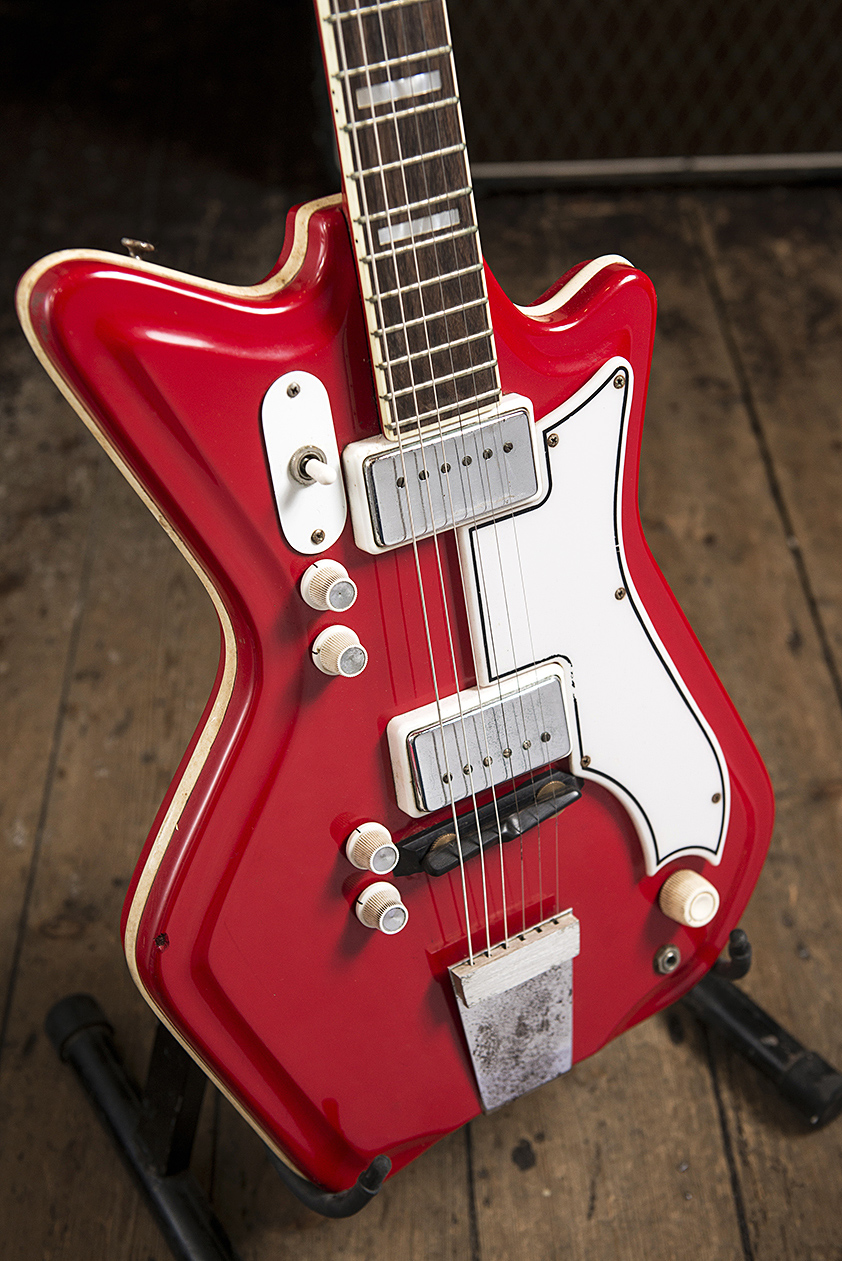“I Always Look at Playing Guitar as an Attack. It Has to Be a Fight”: How Jack White Made Cheap Guitars Cool (and Expensive!)
The White Stripes guitarist proves music is in the heart, mind and fingers of the maker in this awesome SNL performance of “Dead Leaves and the Dirty Ground.”

As most fans will agree, never has so mighty a sound been made on so humble an instrument.
But it would be difficult to call Jack White’s 1964 Montgomery Ward Airline Res-O-Glas cheap anymore, after his use of the ’60s catalog fodder sent values and collectibility soaring sky high.
From the start, though, the White Stripes’ ethos was firmly rooted in the power of minimalism, and giving the band’s sparse ingredients room to breathe often translated “less is more” into “less is huge!”
White wasn’t the first guitarist to discover the conversely massive, dynamic tone that an erstwhile cheapo instrument can generate, but when he strapped on his red Res-O-Glas beauty, the guitar world quickly recognized the full achievement of this silk-purse-out-of-sow’s-ear-like conversion.
The fiberglass body, assembly-line construction, and dual Valco single-coil pickups (humbuckerish though they appear) add up to an edgy, characterful snarl, and definitely get the big riffs across.

A big part of this instrument's appeal for White seems to be that it’s not an easy or forgiving electric guitar to play.
As he told Guitar Player in 2010, “I always look at playing guitar as an attack. It has to be a fight. Every song, every guitar solo, every note that’s played or written has to be a struggle…
All the latest guitar news, interviews, lessons, reviews, deals and more, direct to your inbox!
Every song, every guitar solo, every note that’s played or written has to be a struggle
Jack White
“The idea behind using the Ward’s Airline in the White Stripes was to prove that you don’t need a brand-new guitar to have character, to have tone, and to be able to play what you want to play. You can do it with a piece of plastic.”
The fact that White’s playing has sent the desirability of such plastic – or fiberglass – guitars off the charts doesn’t change the principle behind the sentiment, and he deserves double credit for once again affirming that the music is in the heart, mind and fingers of the maker, and not the price tag of the instrument.
Browse the White Stripes catalog here.
Dave Hunter is a writer and consulting editor for Guitar Player magazine. His prolific output as author includes Fender 75 Years, The Guitar Amp Handbook, The British Amp Invasion, Ultimate Star Guitars, Guitar Effects Pedals, The Guitar Pickup Handbook, The Fender Telecaster and several other titles. Hunter is a former editor of The Guitar Magazine (UK), and a contributor to Vintage Guitar, Premier Guitar, The Connoisseur and other publications. A contributing essayist to the United States Library of Congress National Recording Preservation Board’s Permanent Archive, he lives in Kittery, ME, with his wife and their two children and fronts the bands A Different Engine and The Stereo Field.

